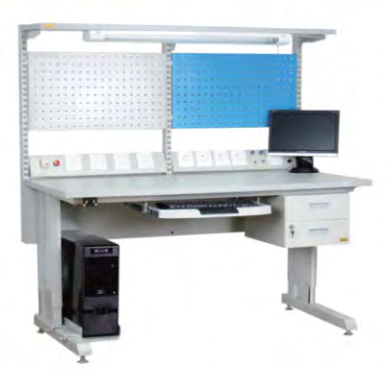A work area which handles delicate electronic equipment requires electrostatic discharge protection as a critical safety measure. The correct setup of ESD workstations makes the distinction between component protection and expensive destruction. A large number of mistakes frequently occur during the establishment and upkeep of ESD workstations despite their critical importance. The following article examines standard ESD workstation maintenance errors before providing practical remedies for optimal function.
Frequent Setup Errors
Improper Grounding Techniques
An established ESD control strategy relies on proper grounding as its essential foundation. Poor connection methods during grounding operations appear as a common mistake which greatly reduces the effective protection of ESD workstations. The most regular errors in ground implementation include the following:
Lack of a Dedicated Grounding Point: The improper grounding of workstations exists when there is no specific dedicated grounding point or when electrical systems share the same grounding point. The use of shared grounding presents a possible safety hazard because it might lead to changes in grounding potentials.
Insufficient Grounding Paths: The protection weakness arises when a workstation uses only one protective path between the operating voltage potential and the Earth. Having backup grounding paths is necessary because it maintains steady protection during electrical path failures.
Improper Connection Methods: The application of wrong connection methods using poor-quality connections produces ineffective grounding systems. Non-secure grounding materials along with loosely attached clips cause ground potential variations.
Incorrect Material Choices
The selection of proper materials stands alongside the correct grounding technique in terms of importance. Many workstations fail because workers select inappropriate materials for their applications.
Non-ESD Safe Surfaces: Using surfaces or tools that are not designed to dissipate static can create areas where charges accumulate, defeating the purpose of an ESD workstation.
Inappropriate Footwear or Clothing: Surfaces and tools that lack ESD dissipating capabilities cause charge buildup which opposes the purposes of an ESD workstation.
Inadequate ESD Mats and Wrist Straps: Producing electrostatic fields in ESD-sensitive environments become possible when employees wear particular footwear or clothes that are unsuitable. Non-compliant operational items might create electrostatic charges during their use.
Solutions and Preventative Measures
Correct Installation Methods
The risk of wrong material selection together with improper grounding can be lowered through correct installation methods.
Dedicated Grounding Points: Total ESD protection requires special points to establish grounding systems which function solely for ESD defense. Regular testing of identified grounding paths with clear markings must verify their low-resistance operation.
Multiple Ground Paths: A protection system gains additional reliability through multiple grounding paths that can function as backups. The system contains multiple grounding paths which enable continued protection in case one path becomes non-functional.
Reliable Connection Methods: The implementation of high-quality connectors intended for ESD applications represents a reliable connection method. All ESD connections must be checked for security and inspections must occur with regular frequency.
Choose Proper ESD Materials: All workstation surfaces together with tools and mats should receive ESD-safe selection. Regular material inspections must check all areas for signs of mechanical damage and failure.
Regular Auditing and Review Processes
High-quality ESD setups still demand constant supervision from personnel. Standardized review procedures allow organizations to identify problems earlier than they develop into major complications.
Routine Inspections: Every ESD control equipment requires regular inspection as part of standard procedures. The ESD control program requires inspection of grounding points to verify they remain intact while employees need to examine mats for damage and wear and both footwear and clothing must adhere to compliance guidelines.
Monitoring Equipment Performance: The use of monitoring tools helps employees determine how well ESD control equipment functions. The testing of ESD control equipment includes conducting resistance checks on mats and straps and assessing the condition of grounding points with testers.
Training and Re-training Personnel: Maintaining ESD protection requires continuous training for everyone on staff. Workers receive both ESD control reinstruction and training on current best practices and modern technologies through these programs.
Documentation and Record-Keeping: Each audit along with inspection and training session needs documentation through detailed record maintenance. The recorded information helps identify problem origins as it enhances the effectiveness of complete ESD control systems.
Finally, installation and maintaining an effective ESD workstation includes careful attention to grounding techniques, content options and regular monitoring. By avoiding normal mistakes and adopting active measures, you can create a safe and more efficient environment to handle sensitive electronic components.







